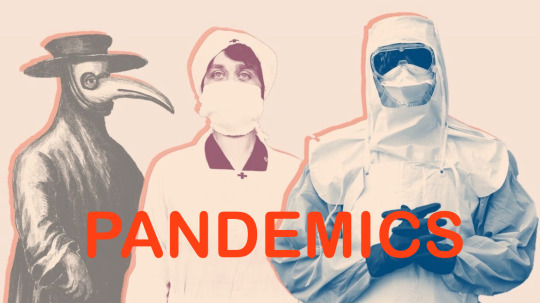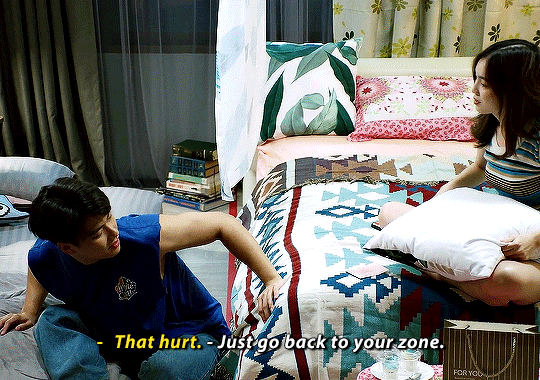#(pa)
Explore tagged Tumblr posts
Text

A little late to the party but after seeing so many Mikus in other cultures decided to do one from my own and well I’m from Pittsburgh and let me tell you our culture is road rage
#Hatsune Miku#Miku#My Art#artists on tumblr#Vocaloid#miku in your culture#miku international#miku in my culture#miku around the world#fanart#Miku Hatsune#anime#cute#Pittsburgh#miku fanart#character design#funny#vocaloid fanart#hatsune miku fanart#PA#Pennsylvania#culture#yinzer#jagoff#black and yellow#steelers#pirates#penguins#black and gold#pitt
36K notes
·
View notes
Text

3K notes
·
View notes
Text

#Hatsune Miku#Miku#My Art#artists on tumblr#Vocaloid#miku in your culture#miku international#miku in my culture#miku around the world#fanart#Miku Hatsune#anime#cute#Pittsburgh#miku fanart#character design#funny#vocaloid fanart#hatsune miku fanart#PA#Pennsylvania#culture#yinzer#jagoff#black and yellow#steelers#pirates#penguins#black and gold#pitt
1K notes
·
View notes
Text





some recent sketches i did without context
#tf2#tf2 fanart#doodle dump#engineer tf2#sniper tf2#medic tf2#anthro#team furtress#kitty engie#gunslinger#cord tail#trucks and vans#bush medicine#rant in the tags time woooo#i've been feeling kinda burned out on drawing Engie recently#pa#`r`#sorry my cat walked across my keyboard. anyways#partly because my finals are coming up and i've been stressed#so that also really kills my creativity#and partly because i've been like. only drawing him for months basically#so i'm a little bored of JUST him#kinda like eating only meat for like a week. i need veriety in my diet guys#so i'm gonna focus a little more on having veriety again in the mercs that i post about#not abandoning him altogether obviously#he's my wife and i love him#but i need to not go insane also
621 notes
·
View notes
Photo

Cairngorm, Scotland
Three rare white reindeer calves graze before joining the rest of their herd which is preparing to tour the UK in the run-up to Christmas
Photograph: The Cairngorm Reindeer Herd/PA
#the cairngorm reindeer herd#photographer#pa#cairngorm#scotland#white reindeer#animal#mammal#reindeer#wildlife#nature
3K notes
·
View notes
Photo

Maze, 1972 by Alice Aycock
12-sided wooden structure of 5 concentric dodecagonal rings broken by 19 points of entry and 17 barriers 32’ diameter x 6’ high Originally sited at Gibney Farm near New Kingston, Pennsylvania
#art#landscape#photography#black and white#maze#alice aycock#PA#Pennsylvania#dodecagonal#installation#u
2K notes
·
View notes
Text

PANDEMICS- Hostile Power Takeover? Learnings on Urban & Domestic Warfare, “Disease: Bacteria Part 1, Fundamental Considerations”:
Let’s say the hostile power is more technologically advanced & half robot/half machine or full machine, so seemingly unkillable. Organic beings are very vulnerable to having disease used as a weapon against them.
Disease can be a major benefit to this type of hostile power & it would be an incredibly powerful weapon. This allows the destruction of an organic-based domestic population & it can also allow the harvesting of resources to build new bodies and/or reuse of the entire body depending on the disease process.
There are many insidious ways diseases develop & spread. This process DOES NOT just occur in a laboratory. Remember that there are many different “groupings” of entities we refer to as pathogens or things with the ability to cause disease.
Bacteria are an important one. Bacteria & other pathogens can reproduce by multiple means. Here I’m going to speak about bacteria with the capacity to do Bacterial conjugation. This involves passing characteristic between two different bacteria similar to how sexual reproduction can pass on characteristics. This is overall an important conversation because a lot of the most complex & common life forms in our daily lives also spread these characteristics through similar principles through sexual reproduction.
> A lot of bacteria to our awareness are able to pass on characteristics. Bacterial DNA contains the “instructions”/“resources” for bacteria to either have or not have characteristics.
-Bacterial conjugation for example allows one bacteria to attach to a second bacteria & send resources to the second bacteria. After this process, the second bacteria is able to transform and display the characteristics transferred to it. Example: Bacteria A can change colors like a chameleon. Bacteria B cannot change color. Once Bacteria A attaches to Bacteria B and they are compatible, Bacteria A passes on resources to Bacteria B. Bacteria B then acquires the ability to change color. Bacteria B now can change color & has attainted the same advantage as originally only bacteria A had. Now Bacteria A and Bacteria B can change color like a chameleon.
- The other way characteristics form & occur in a bacterial population is through mutation. If a bacteria’s DNA is altered or mutates then it can produce a bacteria with new traits & characteristics. Radiation for example, like from X-rays, often causes mutations. Sometimes mutations do “nothing” we can really perceive with our eyes. But overtime, they will eventually create large changes and can produce huge benefits for bacteria. For example: A bacteria could have always have been wiped out from nuclear weapons then overtime from mutations it can acquire the ability to survive living inside an area with nuclear radiation.
-This is a very important concept to fully understand so that you can become cognizant of how insidious this process is when discussing what bioterrorism in the modern world can look like. Pandemics are not caused just from mysterious lab leaks. The practices we do everyday are still contributing to the next pandemic occurring.
-This also gives everyone a better understanding of how MRSA or an antibiotic resistant bacteria really was “made” inside our hospitals.
> Bacteria can possibly have random or genetically engineered characteristics.
-If there are 100 random bacteria on an isolated surface that formed there naturally, some will have favorable characteristics to cause severe disease. But, some bacteria will not have those characteristics to cause severe disease. The bacteria lacking these deadly characteristics, but are still part of the same family of bacteria, would be considered weaker pathogens (weaker pathogen meaning they would cause less severe disease in organic beings).
-**But it is important to remember, If someone purposefully put bacteria down on a surface there is a chance it will not be a random distribution in strength of bacteria & they will mostly all be bacteria with strong characteristics. That group would probably be closer to 100 out of 100 of the bacteria carrying the deadly characteristic.**
>There are 2 main basic premises (which can be further subdivided and added onto when discussing what makes pathogens strong, but for now I’m discussing a more fundamentals explanation) we consider when determining bacterial pathogen strength: number of bacteria & the amount of deadly/harmful characteristics each bacteria possess.
-Reducing the overall number of bacteria in a group of random bacteria does not always mean you make a pathogen less strong. (Example: Purposefully killing 50 bacteria out of 100 and now there are only 50 bacteria in the group.)
If you destroy many of the weaker bacteria & only leave strong bacteria to reproduce, pathogens overtime can get stronger & more deadly. So, by destroying only the weaker bacteria in a group of bacteria, you slowly make pathogens stronger through this natural process & it doesn’t have to occur inside of a laboratory. To make a bacterial pathogen less strong by focusing on decreasing the overall number of those bacteria that exist in our world, you would also have to consider how many of each strength you eliminate. This is because we currently we do not use practices that wipe out groups of bacteria 100%, so we must consider these two elements together instead of separate when evaluating pathogen strength. Example: Lets say there are 100 bacteria and you wipe out 90. Bacteria A can cause humans to be paralyzed. Bacteria B cannot paralyze humans. Out of the 10 bacteria still alive, if all 10 are Bacteria A then you have eliminated the chance people would be infected with the less severe version of the disease, with Bacteria B. In the long term Bacteria A now has a strong chance to reproduce & when Bacteria A infects people it would then cause paralysis in everyone & the population could collapse. In another scenario, consider if you wiped out 90 bacteria out of 100, but you did it purposefully. Out of the 10 bacteria left, 9 were Bacteria that were Bacteria B & couldn’t cause paralysis. The last 1 out of the 10 left was Bacteria A. Then when those 10 bacteria reproduced it effectively helps “dilute” this negative characteristic in this bacterial family. Based off randomness & probability, when there this group reproduces to the size of 20 bacteria only approximately 2 of them may carry Bacteria A’s paralytic characteristic & 18 will carry bacteria B’s characteristic that does not cause paralysis. So, even though we can’t stop the bacteria number from growing, since we mindfully intervened we can still divert the trajectory of the pathogen from becoming a pathogen with the ability to become “pandemic level” and/or very very harmful.
>Two ways pathogens can get weaker is by lowering the amount of bacteria in the world & by lowering its severe disease characteristics, but this these two categories have an important interplay.
-This is an oversimplified explanation of how disease spreads & evolves, but the fundamental principles are VERY important to the overall understanding of what’s occurring. Imagine a group of bacteria you count has 100 total bacteria. 50 of them carry a gene to cause paralysis in humans & 50 do not carry this gene. When 100 people come in contact with the 50/50 bacteria distribution and get sick only 50 out of 100 of the people get paralyzed. This allows the other 50 people time to work on vaccinations & interventions to stop everyone from eventually being paralyzed.
-But, if you kill the 50 out of the 100 bacteria that do not carry the gene for paralysis then your bacteria group went from 100 to a total of 50 in size. In the short term the spread of the disease is likely to go down, as it is less likely people will randomly spread 50 objects instead of 100. BUT, those 50 bacteria with the gene to cause paralysis will only reproduce with other bacteria that also have that gene. So this bacteria, since you wiped out the 50 that don’t cause paralysis, now ALL cause paralysis & anyone who comes in contact with this bacteria strain will get paralyzed. So eventually with time the group of 50 bacteria will reproduce to 100 & spread at the same rate as they were originally, but now they cause more harm to people.
>When you unknowingly touch a colony of bacteria on an object or life form, you pick up a random sample of random “strength” of bacteria.
>****PLEASE READ: you can ALSO pickup a sample of bacteria that is all “strong bacteria” but this is NOT usually a natural occurrence you will see & is suggestive someone or something altered the bacteria and purposefully put those bacteria there. A group of bacteria that looks like it formed organically vs one that was purposefully placed there can be differentiated with taking samples of surfaces and people & counting how many strong bacteria vs weak bacteria there are, but we as a population do not regularly test for this in this way. Due to this I’m going to speak with the viewpoint of natural bacteria groups that have a gradient of “strengths”. In an ideal world we would identity groups of bacteria that have gradients of strength of bacteria vs groups of all similar strength, as interventions to stop them from becoming strong pathogens work DIFFERENTLY.)
>After you touch those bacteria they attempt to multiply and stay alive on you. Then if you touch other things they can be placed on another surface or thing. Sometimes they are placed on other surfaces in an environment or you touch your body & they are placed closer to an entrance to the inside or your body & then they are able to enter your body.
-This process will cause one of the following to occur: bacteria will stay in the area you touched & colonize it, they will die when attempting to enter the body, the bacteria will give you a disease , or in some cases the bacteria will live symbiotically inside you & help your body. If a bacteria lives symbiotically with you & does not cause harm then we do not refer to that as a pathogen, but rather just as a bacteria.
>Anytime you wipe out a group of bacteria by taking out 100% it causes that pathogen to get weaker overall, but the issue is that we do not do interventions that wipe out 100%.
-Currently anytime you clean an object in the hospital with a sanitizing wipe, you always kill less than 100% of the bacteria. This leaves behind a certain % of bacteria & they will be the strongest of that group of bacteria, because they were able to live even though you applied a cleaning product on them. This means the strongest bacteria left, even though there are less after cleaning, are now reproducing over and over again & getting stronger.
-So, when there is an environment with a large amount of bacteria variability (so all these new patients with new exposures to new bacteria that travel and touch things all the time), with shared equipment, with not 100% effective methods to destroy pathogens, & this long list of variables, we slowly produce very strong & deadly pathogens inside of hospitals.
-IF someone purposefully puts deadly bacteria ontop of a surface inside a hospital and it is a group of 100 strong & identical or cloned bacteria with no difference in genetics then wiping them out through imperfect cleaning will overall reduce pathogen deadliness. This is because there are no “stronger” pathogens vs “weaker” pathogens. They are all the same strength in this example and therefore will always get weaker when you reduce their number because they won’t reproduce to be more deadly.
>People often think when people are trying to cause them harm that would only occur when someone makes a pathogen in a lab & then deceptively goes and places some near you. This is not accurate.
-With knowing this do you see how for a hostile power there is actually LESS incentive to going through with all that work & instead a hostile power can abuse the system to cause harm? If you expect biological warfare to ONLY come out of a lab, this means you would be looking for the wrong patterns of behavior & pathogens will spiral out of control.
A lot of practices we currently use now unfortunately heavily contribute to this process that causes pathogens to get stronger.
#pathogens#doctor#medicine#physician assistant#nursing#nurse#registered nurse#evolution#disease#bacteria#np#nurse practitioner#pa#md#rn#meds#pharmacy
436 notes
·
View notes
Text


A tiny churchyard in the hills, & the drive home. Seven Valleys, PA.
35mm Fuji 200.
#personal#35mm film#35mm photography#nikon f3#rural gothic#small town gothic#seven valleys#PA#pennsylvania#cemetary#churchyard#the idol collective
252 notes
·
View notes
Text

2K notes
·
View notes
Text

*pierogi pizza is a dish originating in Pennsylvania. it consists of pizza dough with mashed potatoes instead of sauce, cheese, onions, and garlic, but can also include bacon, sour cream, and other ingredients.
#tried it while visiting friend in pittsburgh and it was very good#polls#queued#my polls#food#pierogi#pierogi pizza#pennsylvania#PA
116 notes
·
View notes
Text







#good morning 😍😍😍😍#userkit#userconcrete#bad buddy#badbuddyedit#napat jindapat#ohm pawat#pa#love pattranite#bbig#ep 7
474 notes
·
View notes
Text

The Pennsylvania Senate race is still too close to call.
While it's unlikely to affect the presidential race, I hope Americans are aware that the NBC decision desk (pictured above) and New York Times decision desk have not yet called the Pennsylvania Senate race between McCormick (R) and Casey (D), deeming it still too close to call. The AP called the race for McCormick on Wednesday November 7, citing a 30,000 vote margin between the candidates with an estimated 91,000 votes remaining to count -- the rationale being that there were not enough potential votes left in areas favouring Casey to make a difference.
Since then:
The number of estimated votes left to count has been updated by PA from 91,000 to at least 100,000 per a Thursday announcement from the PA Secretary of State, including provisional, military, overseas, and some Election Day votes;
McCormick has filed multiple lawsuits in an attempt to prevent or limit continue counting of provisional ballots, some of which have now by Friday been withdrawn or dismissed;
Efforts from a group called "PA Fair Elections" to challenge 4,000 mail-in ballots (mostly from overseas or military voters) have now all been withdrawn or dismissed. A number of these challenges had previously been flagged both by the media and by individual voters. (Screenshots of these challenge emails being circulated on tumblr alongside accusations of 'cheating' -- in the end these challenges were made in bad faith, but technically made and ultimately dismissed through legal means.)
This DOES NOT MEAN that the Pennsylvania Senate seat is in any way guaranteed to flip once all the remaining votes are counted. The race is extremely close -- enough so that the AP is confident standing by its call.
What it DOES mean is that the votes have not yet finished being counted, and that it is not yet truly known who will have the most votes in the end. Although McCormick has already declared victory, Casey (in my view very reasonably and wisely) has not yet conceded and is calling for all votes to be counted.
By Pennsylvania law, a recount must occur if the race is within 0.5%. It's looking likely that this will occur. While recounts rarely change the outcome unless results are truly within the main of a handful of votes, they are an important tool for ensuring confidence in the final results.
I know that people are grieving and demoralized right now, but these tight margin races are CRITICAL for determining how large the margin of victory will be for Democrats to flip the Senate in future elections. (Assuming future electing aren't subverted or dismantled somehow by a second Trump administration, but we have to hold out hope for institutional residence here.) The outcome of this and other right Senate and House races may have enormous consequences in a few years, and it would be agonizing to look back and realize that the window of opportunity to ensure a fair outcome had been squandered.
So -- what can Americans do?
Send a note to Bob Casey and his team via his campaign website in support of his efforts to ensure all votes are counted (particularly given the legal challenges from the Republican candidate and Republican-aligned groups) and decision to wait to concede until all votes are counted. The man is getting dragged in Conservative media in particular for 'refusing to concede'; add your voice to the people validating that decision as both reasonable and moral.
Keep an eye on this race as the counting (and potential recounting) proceeds, including any further legal challenges attempting to prevent or limit the counting of all ballots. Regardless of the outcome, all eligible votes MUST BE COUNTED. To do otherwise would be both subversion if democracy and an stoicism legal precedent for future elections.
Watch for other legal challenges, particularly in battleground states or right races, seeking to disqualify or prevent the counting of ballots. Look for credible sources, especially local ones. Make noise about them with cited sources if you think there is a risk they may be missed. Notify groups like Democracy Docket or the American Civil Liberties Union if you have concerns. Shared truth and shared confidence in the legitimacy of election results -- including that all eligible votes are counted -- is essential for democracy to function.
Push back on claims that the election results are fully known or finalized. With multiple House races still undecided and a few razor-thin margin Senate races with ballots remaining to be counted, those kind of statements are simply not true. And state-level race are inherently more likely to not make it onto people's radar than the presidential race if candidates try to make it so certain ballots aren't counted or contesting the results if a tight race flips.
There is only a very small window post-election to ensure things like outstanding legal challenges over whether certain ballots can be included in the count are resolved. Please stay alert and do not let that window close without doing all you can to ensure every eligible ballot is counted -- particularly in those tight, tight down-ballot races. 🙏
Note: This post should be accurate as of the end of day on Friday, November 9. Once the results of the PA Senate race are known and truly final, I will update this pay with the results.
UPDATE: As of November 22, Bob Casey (D) has now officially conceded the Pennsylvania Senate race to Dave McCormick (R).
:(
#pennsylvania#us senate#us election#election 2024#pa#us politics#uspol#democracy#i hasn't realized that this race still hadn't been called#or all ballots counted#and seeing the legal challenges from McCormick when i dug into it further made me Extremely Unimpressed#combined with the bad faith challenges to overseas ballots this seems to me like a coordinated/multifaceted effort to disenfranchise voters#is it 'fraud'? likely technically not#but it's certainly immoral and undemocratic#and should not be tolerated#regardless of whether it does it did not end up affecting the outcone
158 notes
·
View notes
Photo

Giant spectral truck Jesus done with oil pastels, found in the Salvation Army store in Whitehall, PA.
657 notes
·
View notes
Text
PA: in the following two weeks updates will be very random 🙃 Sorry about that ❤️

118 notes
·
View notes
